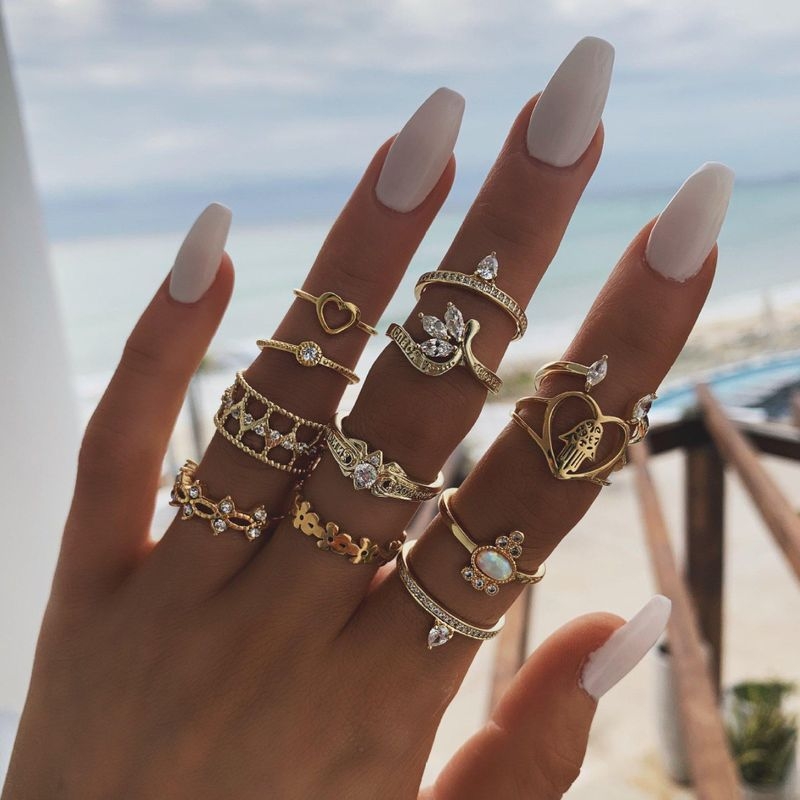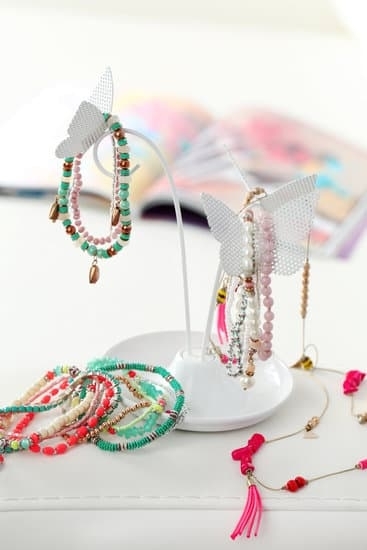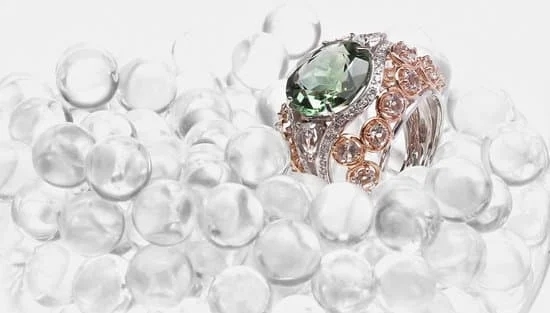Victorian Era jewelry spans from 1837 to 1901 and is known for its ornate and romantic styles. During this period of time, Queen Victoria reigned in England, which is why the period was named after her[1]. The era marked the Victorian Age of culture and fashion which changed drastically between the beginning and end – by the end of the era, mass-produced jewelry was becoming readily available for a larger range of people[2].
Craftsmanship came in many forms during this time as jewelry makers repurposed coins created by past ruling families, intricate designs set with precious stones, goldsmithing and enameling techniques such as Limoges enamel work and cameo carving were popular choices of material [3]. Jewelry was mostly crafted using these techniques along with inspiration drawn from nature-themed motifs like flowers, stars and heart shapes.
Designers Initially – How Did Fashion Start To Change?
The third quarter’s decades saw a rise in experimentation amongst craftspeople who began to explore different methods of design alongside more unconventional forms such’ artwork as hairwork, lockets with sentiment inscribed tablet pieces or crests. Necklaces were embellished by symbolic charms taken from popular books of the time or meaningful symbolism associated with certain colors.
Highlighted materials such as jet, gold coral and mother-of-pearl were used across various designs – from bridal sets to mourning belts designed for those in commemoration leaving behind loved ones [4].
The Influence on Modern Trends – Impact of Today
Although formalized throughout history, it was only around the middle stages (mid Victorian) period where large-scale production gave way to diversity among all type of purchasers due to economic growth. As a result today’s trends are largely inspired by this variety which originate directly form this specific old decadence.
From stackable rings adorned with pearls and DIA diamonds , layered necklaces – which can include evil eyes & hearts or celestial elements – alongside statement pieces like keystones , snakes or anchor chains are all go-to staples rooted within Victoriana culture that continue up until now. [5]
References:
[1] A Brief History Of Victorian Jewelry – National Jeweler https://www.nationaljeweler.com/fashion/a-brief-history-of-victorian-jewelry/53696
[2] History Of The Victorian Jewellery Era| What Is It And How It Changed www.spiritofheartsjewellerydesigns.co/pages/the_history_of_victorian_jewellery_era
[3]BBC – GCSE Bitesize Designers And Materials In The Victorian Period http://www.bbc.co.uk/schools/gcsebitesize/design_technology/resistantmaterials_backgroundknowledge/19thcenturyvictoriana2haylcokselseyrev3.shtml
[4] Anne Mitchell:”Jewelry Making: Techniques in Crafting Charms” pp 75-77 Barnes & Noble Publishing Corporation; 3RD edition (1996) ISBN 0764581872 [5] High Style: 6 Popular Rings From The Victorian Era Worth Collecting Now – Royal Coster Diamonds https://www.royalcosterdiamonds.com/en-us..
Popular Styles of Victorian Jewelry
Victorian-era jewelry has seen a huge resurgence in recent years, as people continue to admire their romantic designs. This period of jewelry making was all about extravagance and a fusion of culture, with elements from Gothic, neo-classical and even non-European styles blending together into truly unique masterpieces.
Jewelers often favored precious metals like gold, silver, platinum and palladium when setting gemstones, carved shells, ivory and more. This versatility meant that pieces were often ornate and intricate in design.
One very popular type of Victorian jewelry was the brooch; theseoften featured various combinations of stones or other materials laid into them in an eye-catching way that would have been fashionable at this time. Brooches could either feature a single large stone or a variety of small ones to create a dazzling effect.
They used to be pinned onto clothing representing a sign of wealth and extravagance amongst ladies during the 19th century. Consequently they ranged from large extravagant pieces to delicate small items suitable for everyday wear.
Another popular item was lockets; thesehave always been treasured due to their ability to store sentimental items such as photographs or special written messages away safely inside them. Many Victorians opted for large oval shaped lockets featuring intricate engravings on their outwardly appearance; such works often asked expert craftsmanship to perfect in order for them look desirable for late 1800s fashionistas.
In addition stringed – beads constructed into necklaces or bracelets were also very popular; because Victorian women loved to display gemstones when out at parties, theaters and balls these jewels swiftly becoming synonymous with the era’s style aesthetic.
Jewelry Craftsmanship
The Victorian Era was a time of great advancement in the art of jewelry making. It is commonly referred to as the golden age of jewelry due to the exquisite pieces created during this time period. Craftsmanship was incredibly important and highly valued, given the amount of detail put into each individual piece.
Traditional techniques including hand carving and enameling were utilized in order to create intricately patterned designs, making some pieces have an almost ethereal-like quality about them. Because at this time labor was relatively cheap, more affordable metals such as brass, copper and bronze were used instead of gold or silver.
The craftsmen and women working during this period were highly experienced artisans who had mastered their craft through years of apprenticeship and practice. Their expertise enabled them to work with such intricate detail that it becomes almost impossible to spot any imperfections when looking at a piece from up close. Not only were these artisans creating unique designs but they also adopted forward thinking techniques too.
An example is electroplating, which involved coating metal items with other metals such as gold or silver using electrical current. This allowed for more cost effective pieces that still looked luxurious; a technique that can still be seen used today.
Another notable feature among Victorian jewelry is the use of gemstones in their works; many opt for pastel shades like pink or blue sapphires but diamond often takes centre stage here too.
The symbolic meanings behind each stone being chosen by the buyer provide insight into why they made such popular choices throughout this era: sentimentality perhaps being one of the main influences on purchasing choices at this time as well as aesthetic values also playing an important part in selection criteria.
All factors considered give us a glimpse into why our ancestors were so creative during this period – not wanting to just purchase something mundane – but rather something with personality and meaning within its design itself.
Inspirational Creators
The Victorian Era was hosting some of history’s most amorous and creative jewelry displays. It is a time that many regard as the golden age for jewelry-making, thanks to some of the most impressive craftspeople and designers who have been producing content during this period.
John Brogden & Sons from Birmingham, England were one of the most influential creators during this era. John Brogden & Sons used innovative techniques such as metal die-stamping to create intricate detail in otherwise ordinary pieces of jewelry.
Their stylistic preferences had a strong influence on Edwardian jewelry design, which focused on lightness, grace and simplicity. Some particular works that stand out are the elongated seed pearl drops with peacock feather motifs and gilt gold ogee settings which featured prominently in their collection at the time.
Another renowned jeweler is Carlo Giuliano, the vibrant red designs lined with diamonds produced by him remain instantly recognizable today. He was certainly one of the trendiest producers of Victorian Era jewelry incorporating intense color combinations particularly inspired by Japanese cloisonne enamel materials together with pearls and precious gems.
Focusing on Egyptian inspired styles, Giuliano was famous for producing lovely pendels utilizing an electroplating technique he invented himself called “cyscros” which combined two metals into a single piece. His trademark whimsical bangle bracelets were also well known among royalty at the time, including an prized version encrusted with 375 diamonds presented to Nasser al-Din Shah Qajar by Queen Victoria herself in 1878 as an expression of diplomatic friendship between nations.
It is evident than many intelligent minds crafted these magnificent jewels that are still worn and admired today almost two centuries later advocating strength from across generations in terms style definition and appreciation of high end sophistication integrating it tastefully within worldly culture expressions as witnessed through art.
Symbolism in Victorian Jewelry
The Victorian Era was a time of immense fascination with the natural world, which is evident in the ornate jewelry pieces of the period. These pieces show intricate detailing featuring animal motifs and representations of nature. This popular trend can be seen in Queen Victoria’s coronation jewelry, which featured symbols of love and faith that lasted throughout her reign.
Victorian jewelry was also heavily symbolic, often containing motifs that carried meanings deeper than the lovely stones and intricate craftsmanship used to create them. Common symbols included love knots, hearts, ivy leaves, butterfly wings, clasped hands, and locked or symbolic gates – each signifying different messages depending on the context.
In addition to being a source of beauty for those who wore them, these symbolic pieces had deep personal significance for many Victorians. A wedding band with intertwined hearts would be seen as an eternal token of love between two souls for example.
Pieces featuring birds signified faithfulness or freedom from limitation; butterflies spoke to hope and transformation; clasped hands indicated friendship or fidelity; keys could represent knowledge or enlightenment; while lockets were tokens of remembrance dedicated to a loved one.
Victorian jewelry provides insight into how deeply meaningful objects were during a period when sentimental attachment to possessions was more prominently expressed – something not out of place among modern trends considering many people wear rings inscribed with meaningful dates and mantras as reminders of values they hold dear. Interestingly enough, while these beliefs may have changed during modern times their origins trace back far into history where roses still represented an everlasting love and horseshoes brought good luck.
Valuables
During the Victorian era, jewelry was a popular and important accessory for many people – whether they were of high social standing or not. Jewelry had a variety of meanings and could be used to express love, celebrate achievements or even provide protection. This can be seen through the variety of pieces created during this time; encompassing earrings, pendants, lockets, collars or necklaces as well as brooches with gemstones like diamonds and rubies.
The cost of these items varied greatly according to the materials used and their intricacy. Pearls and gold were very expensive in the 19th century due to rarity – with some assembled pieces costing thousands of dollars at the time. In comparison to other luxuries from that period (such as cars), antiques from the Victorian era are now relative bargains. Many original Victorian pieces remain, albeit more expensive than when they were first made due to price appreciation over time.
It’s important to note that not all the originals have survived though, with many pieces having been sold off over the years in order to pay bills or similar needs. As such, there is a wider availability of replica Victorian pieces on today’s market – created by a range of craftspeople dedicated solely to replicating antiques.
While they appear almost exactly like their original counterparts, these replicas often lack authenticity – thus if you are looking for an authentic piece it’s probably best to shop vintage or find a licensed antique dealer who can guarantee its origin.
Accessing Victorian Jewelry
The Victorian era was an innovative period in many aspects of society, jewelry being no exception. From 1850 to 1910, it is estimated that the world’s production of jewelry increased fivefold. This increased availability made it easier for people to express themselves through jewelry and helped create a strong bond between people and their possessions. It has been argued that access to such items was one of a major factor in this increase in production.
The most popular access point for Victorian-era jewelry was through antique stores, auction houses and estate sales. At these locations people could see different styles and pieces that were fashioned during the time period along with their current appraised value.
Antique stores typically sold complete collections which was helpful for those who wanted to curate a specific look or understand how different pieces fit together over time. Unlike modern day jewellery, vintage jewellery had more intricate designs making them highly coveted.
Auction houses were another great location as they had many unique pieces from all parts of the world that could be debated for desirable traits at an open forum amongst eager buyers. Lastly estate sales were common too; these typically took place when someone’s possessions where inherited by another individual or party because of death with intention to sell goods on behalf of the benefactor (or estate beneficiary).
Because there are few surviving records from before 1850 recording what styles people owned from this era there is limited information about where exactly jewellery items come from but we can assume where they lay dormant until rediscovered later.
In recent times, there have been more sources available other than antique stores and auctions which makes accessing classic jewelry easier than ever before. With advancement in technology, individuals can now source some beautiful designed pieces online or hire specialized jewellery appraisers to locate rarer items. As previously mentioned authentication can be difficult but reputable sellers will test authenticity using a variety of methods such as X-ray fluorescence gun technology.
One thing to keep in mind is authenticity factors vary based on decade so it is important to do research prior out make an investment into any type shill classic era piece especially if its accompanied with provenances/certificate from appraisal service centers/institutions.
With the population becoming increasingly obsessed with capturing every second of their lives online it is no coincidence that audio jewelry has become trending again – thankfully progressions have made way for authentic pieces be admired once again.
Conclusion
The Victorian Era is characterized by many beautiful works of jewelry. Delicate lace patterns, romantic motifs, and an array of gemstones were all part of the unique fashion statement during this time period. Gold was a popular material and often decorated as filigree or repoussé elements. Silver-tone pieces with floral engraving were also popular, and often incorporated paste stones like rhinestones or amethysts. Long strands of pearls finished off any look for royalty or the commoner.
The styles in Victorian jewelry marry the delicate sophistication of nature with intricate craftsmanship. Gothic elements such as skulls, crosses, and other symbols that incorporate religious themes are quite common. Art Nouveau jewelry was another popular trend during this time period which featured nature-inspired designs featuring colorful enamel elements. The most iconic pieces from this period are lockets that feature portraits or symbols to honor a loved one or symbolize significance in the wearer’s life.
Overall, Victorian Era jewelry represents an aesthetic that was bold yet sophisticated at the same time. The wearer could adorn themselves with precious metals, semi-precious gemstones, and symbolic motifs to express their individual style while still fitting into the strict norms of dress codes at the time. The daring hues and fine craftsmanship remain influential in modern trends today, making it easy to recognize certain aspects in today’s jewelry despite being over 100 years old.

Welcome to my jewelry blog! My name is Sarah and I am the owner of this blog.
I love making jewelry and sharing my creations with others.
So whether you’re someone who loves wearing jewelry yourself or simply enjoys learning about it, be sure to check out my blog for insightful posts on everything related to this exciting topic!





